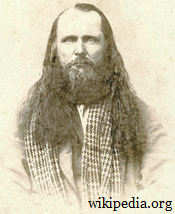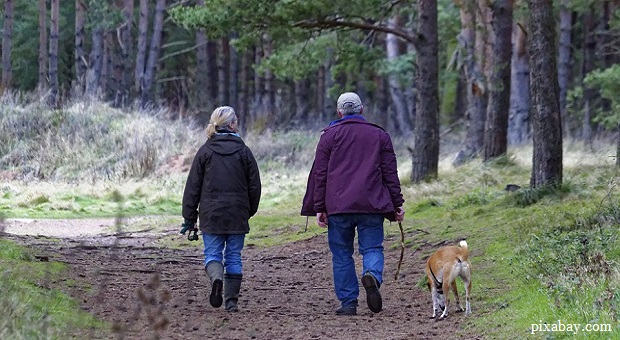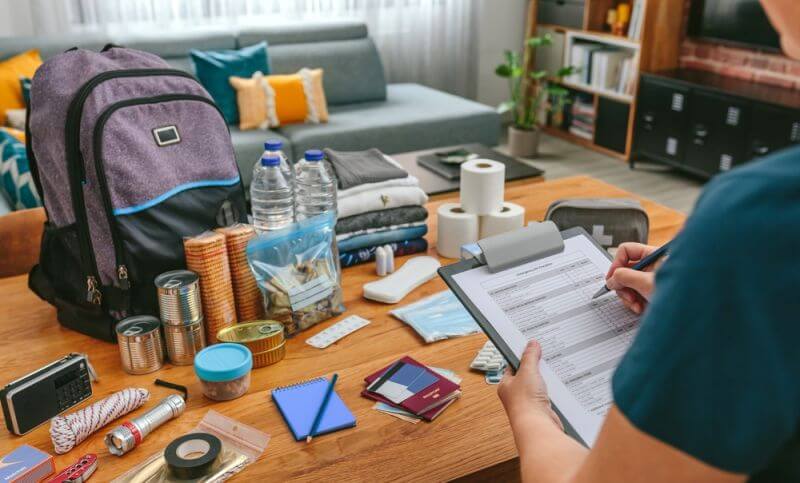There are ways to “live” survival and train every single day, even while we commute, work, eat and run errands. Habits determine our default responses when we are on autopilot, which is much of the time, whether we admit it or not.
Setting good habits and weaving situational awareness and emergency response exercises into our daily routines turns preparedness into something that we live every day instead of something we think about from time to time.
Why does it count? Well, it does, because many times having good habits allows you to train your survival skills while staying under the radar.
Here’s how to do it.
3 Second SEAL Test Will Tell You If You’ll Survive A SHTF Situation
Briefly:
- Choosing your habits, enables you to live your life. Otherwise, you will get lived by life instead of living life.
- Use Visualization and Actualization exercises to reprogram default responses with more effective responses of your own choosing.
- Caches enable you to carry less while still having access to more.
- Carry only what you need. “Skills trump gear” is misguided. Having both saves lives.
- If something doesn’t feel right, it probably isn’t.
- Always have an escape plan/exit strategy.
Porter’s Dog
How on earth did a gunfighter like Porter Rockwell live long enough to die of old age? Porter’s secret was his habits.

He was a legendary marksman and worked as a bounty hunter, guide, body guard and law man in the old west.
Porter put a lot of folks in the dirt, and even more behind bars, which made for a lot of enemies.
Tactically, Porter had a lot stacked against him. O.P. Rockwell was every bit as famous or infamous as Wyatt Earp, Bat Masterson or Tom Horn, in his day, and historians say Rockwell killed more men then all three gunfighters combined. Porter is somewhat of a legal anomaly as historical evidence records at least two dozen deaths at his hands, with Rockwell being exonerated in every case.
He frequently traveled alone on the trail to guide parties West or tracking down fugitives. Every young gunslinger wanting to make a name for himself would have been a potential enemy and Porter often found himself outnumbered by much larger war parties or mobs, but he seemed to have faith that as long has he had more bullets than he did enemies, there was little to fear.
Porter also had a wicked Achilles heel. He drank too much.
Porter Rockwell solved his problem with a little white dog, which he carried with him on the back of his horse. The little dog served as a biological alarm system and Porter trained the dog to lick his face to wake him instead of barking.
He also removed the trigger guards from a pair of pistols, which he carried in his coat pockets, so cold fingers would not hang up on the trigger guards and he could train his guns on potential enemies as they parlayed and spoke on the trail. This gave him a decided advantage should the situation take a turn for the worse as they sorted out who was who.
Some say it was a covenant with God that protected Porter. If that was true, maybe God did so by showing Porter a better way to get the drop on his enemies.
Malcom Gladwell argues that Goliath never stood a chance because God showed David a more effective strategy. Using a sling parted with tradition.
Tradition required that David fight the giant in hand to hand combat using a sword. Had he done so, the story surely would have gone very differently. If Gladwell is right about David, I do not reckon that Porter Rockwell’s enemies stood much of a chance either.
Whether or not Porter’s and David’s strategies were divine or secular in origin, you can form tactically-sound habits and weave effective survival strategy into your daily life just like they did.
Rules to Live By
Many Survivalists have a list of rules they refer to as: Rules of Engagement, Battle Order, Code of Conduct or simply “The Rules.” They are collections of strategies and tactics.
Here are some of mine:
1. Play “What if …?”
By the 80’s, research showed that playing “What if …?” was a more effective training technique than many imagined. Playing “What if …?” now encompasses a range of mental training techniques, including “Visualization and Actualization.”
Professional athletes now visualize themselves pitching, batting, shooting baskets and throwing passes, over and over, before they ever lace up their shoes. Put Visualization and Actualization to work to improve your emergency preparedness and situational awareness.
As you go about your day, consider possible threats and visualize effective responses to them. Soon enough, you will have reset some of your default responses with more effective responses of your own choosing.
2. Include Others in Your Training
Whether training in my home, on the range or visualizing a scenario in my mind, before I draw my weapon, I often do something else first … I alert my wife to the threat and step away from her.
I do this before I draw my weapon because I know that the moment I do, I become a bullet magnet. If your pattern of life typically involves others, be sure to include them in your training.
3. Mind Over Mattress
Do not linger in bed. The second that alarm clock goes off, count down, “3, … 2, … 1, … Go!” and get on your feet before you turn it off. Start every day with a small victory to set the tone and set a good habit for emergency response at the same time.
4. Use Checklists
Flashback to bad YouTube video: “I don’t need no pen or paper in the bush. I’m always at 110% whenever I’m in the woods or when it hits the fan.”
While research does show that leisurely strolls in natural settings reduce rumination, emergencies often involve stress, pain, blood loss, hypothermia, dehydration, sleep deprivation and numerous other factors that degrade performance.
If there is ever a time a checklist would make sure you do not forget anything important, it is in an emergency, but you will fight just like you train. If you do not habitually use checklists in training, you will not likely use them in an emergency.
5. Dress for Survival
As you dress for the day, layer for the coldest nighttime temperature as opposed to the daytime temperature because you never know when you spend an unplanned night out. When you buy new clothing, pay attention to the messages it communicates to others.
Keep clothing low key, but functional. Put together a turnout bag to get ready quickly in emergencies without forgetting anything.
6. Be Aware of Your Surroundings
- Use Cooper’s Color Codes, or a similar system, to maintain awareness and improve both reaction time and effectiveness.
- Do not walk or drive with your eyes glued to a screen! This is what officers on sting operations do when they are trying to look like bait to muggers and carjackers.
- Look for things that are out of place. If you see military age males lounging around during the middle of the work day, something probably is not right. Not seeing any women or children around can also be a bad sign.
- If something does not feel right, it probably isn’t. Academia sometimes overemphasizes left brain thinking. The right brain is where intuition takes place. It is where you inductive reasoning and synthesis take place. Do not think with half your brain. When you use your whole brain, your chances of survival increase.
7. Carry Only What You Need
I also often hear the space-shuttle door-gun qualified crowd of high-speed, low-drag operators enlightening one and all, preaching the carry of a little less than needed. “It encourages problem solving.” they say.
Coming back down to earth, if you can round up two brain cells to rub together, either you need a piece of kit or you don’t. If you carry one less bullet, trauma dressing, battery or bobby pin than needed, I should not have to tell you exactly how the story ends, and it will not matter how many millions of dollars the government spent training you.
Do learn the skills, but counting on your environment to cough up critical resources precisely when and where you need them contravenes thousands of years of human development. Man has carried survival kits for at least that long.
Carrying less than needed is a fine way to train when you have a safety backup. On game day, it is simply another sorry justification of incompetence.
8. Cache Supplies
Don’t put all your eggs in one basket. Want to carry less? By caching supplies in AO’s (Areas of Operations) and routes of travel, you can carry less and still have supplies nearby should you need them.
Do you have a cache at work? Near your home, but not on your property? Caches can take many forms. Not all of them are hidden or even need to be, but some of the best hidden caches are hidden in plain sight.
9. Scan Waist and Hands
Master Po might tell you his eyes will betray his actions, but your attacker is going to kill you with his hands or the weapon he is holding, so that is what you need to check.
10. Carry Concealed
Carry concealed and your sidearm and knife are aces in the hole. Carry openly and you might as well wear a t-shirt that says, “Shoot me first.” An openly displayed firearm or knife gives an enemy more information than you should.
11. Carry Survival/Self-Recovery (SSR) Equipment
SSR gear goes in your pockets or on your belt or otherwise strapped to your body, not in your pack which is easily and oft separated from you. Do you carry a pocket SSR kit in your every day carry?
I have carried one for years and it has helped me on countless occasions. The key is keeping the core small enough and modular so that you never have to leave it behind.
12. Always Have an Exit Strategy/Escape Plan
- Park so you can exit in as many directions as possible.
- When you stop in traffic, stop far enough behind the car in front of you that you can get around him to either side. In most vehicles, if you are fare enough back that you can see the vehicles’ rear tires touching the pavement, you should have enough room.
- Take the scenic route and circle buildings before you enter them.
- When entering buildings, make a mental note of potential exits are and where cover and concealment exist.
- When visiting new areas, study maps, carry a map and compass and learn where key resources, such as friendly consulates, churches and hospitals are located.
13. Urban Setting
To escape from restraints, carry, cache and be able to procure or create restraint escape kit. To escape from rooms, building or vehicles, you need destructive entry/exit tools like:
- Pry bar, tool to cut seatbelts with, glass breaker
- Bypass tools
- Lock picks
There might be other situations when you need to escape, and items you might use to escape, as follows:
- Property: footwear
- Neighborhood: turnout bag and go bag
- City: bug out bag, transportation, money and a safe destination
- State: Money
- Country: Documents, International travel bag and more money
When you’re a prepper, anything you do is very much connected with your survival goals, while staying under the radar is a must. Will you be able to do it?
This article has been written by Cache Valley Prepper for Survivopedia.










dusty | December 14, 2017
|
Do the unexpected.;Most people expect you to act in a conventional manner and are prepared for it. But if you do the UNEXPECTED they are caught off guard giving you an advantage.
Ben Leucking | December 16, 2017
|
Rule #Zero:
Keep your mouth shut.
Don’t talk to friends, neighbors, strangers, or even relatives about your prepping strategy.
lc65 | December 17, 2017
|
Ben – PROBLEM WITH YOUR Rule # zero – only problEm with that is you will not survive long as an individual.
Hell, you can not even have a 24 hr / round the clock security watch.
iT TAKES A TEAM TO SURVIVE !!
also, IF MY CHILDREN AND GRANDCHILDREN DO NOT SURVIVE, WHAT IS THE POINT ?
Dusty | December 19, 2017
|
A group is needed for around the clock security watch if you rely soley on guns. Traps can take out looters very effectively 24/7 with out exposing you as a terget. they can protect an individual or a large group. they can be made to kill, maime or capure and hold. they are better in the country on posted land.
If your children and grandchildren are your only reason for living you have a very empty life.